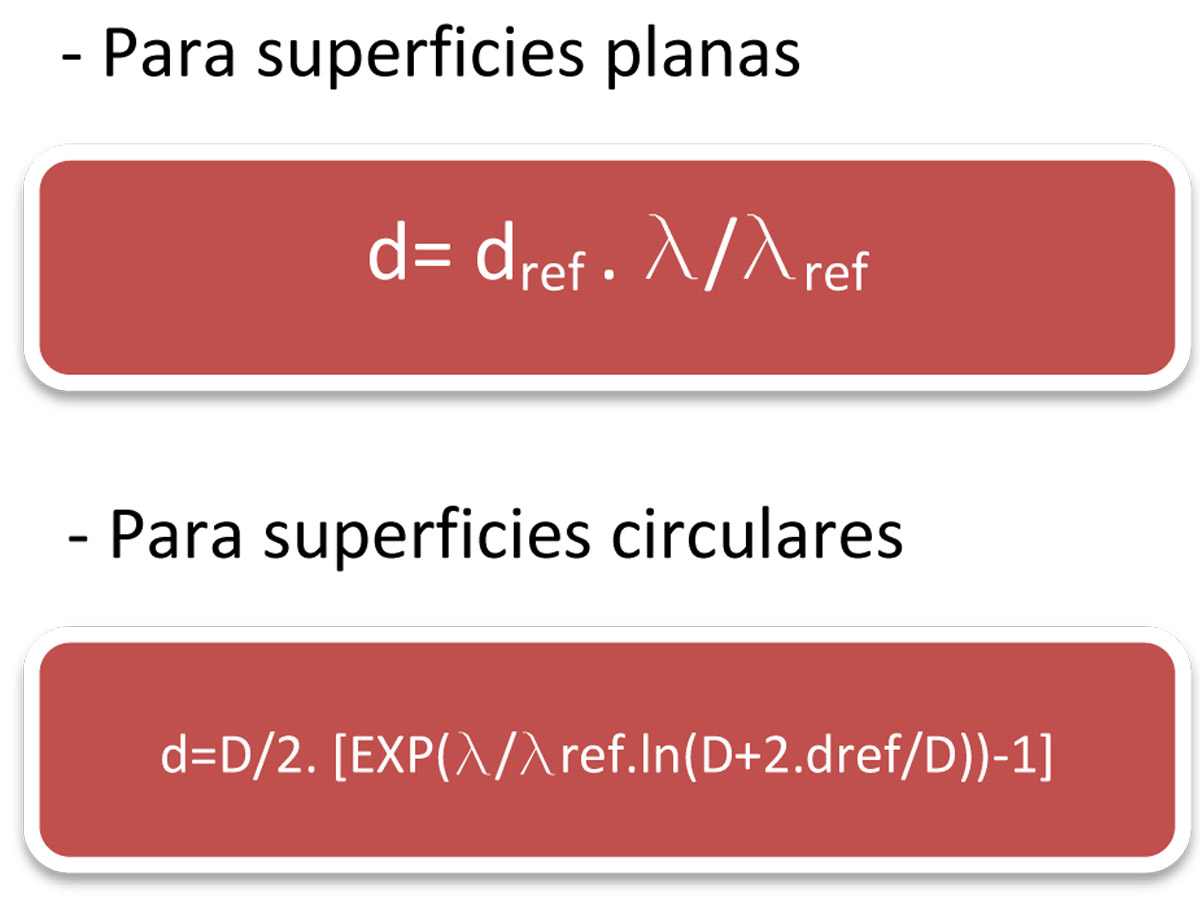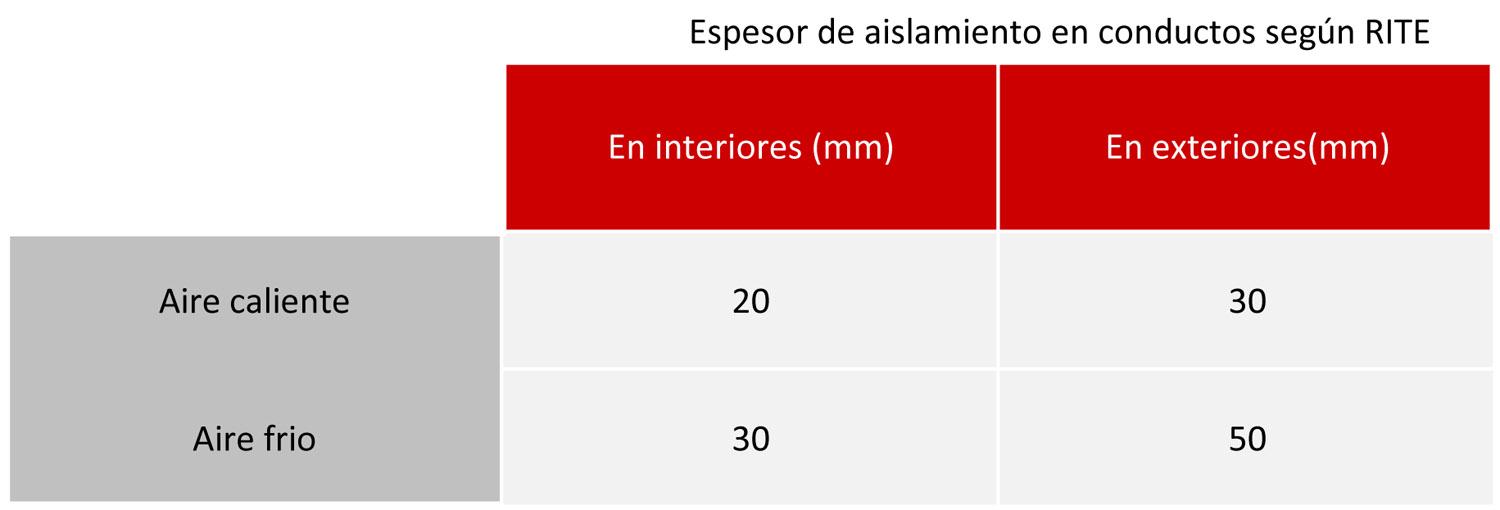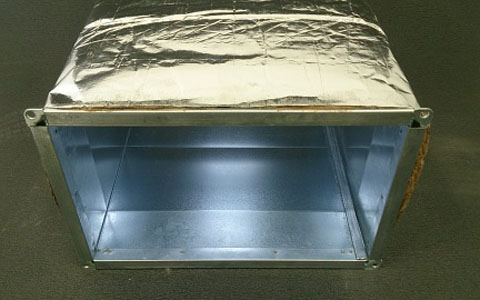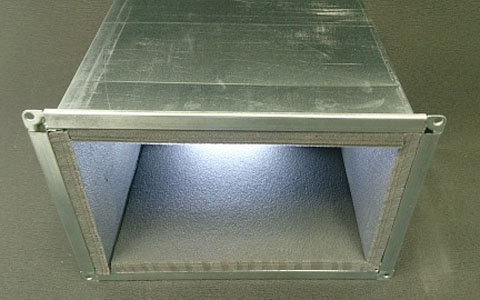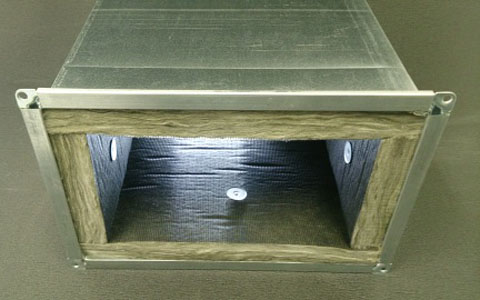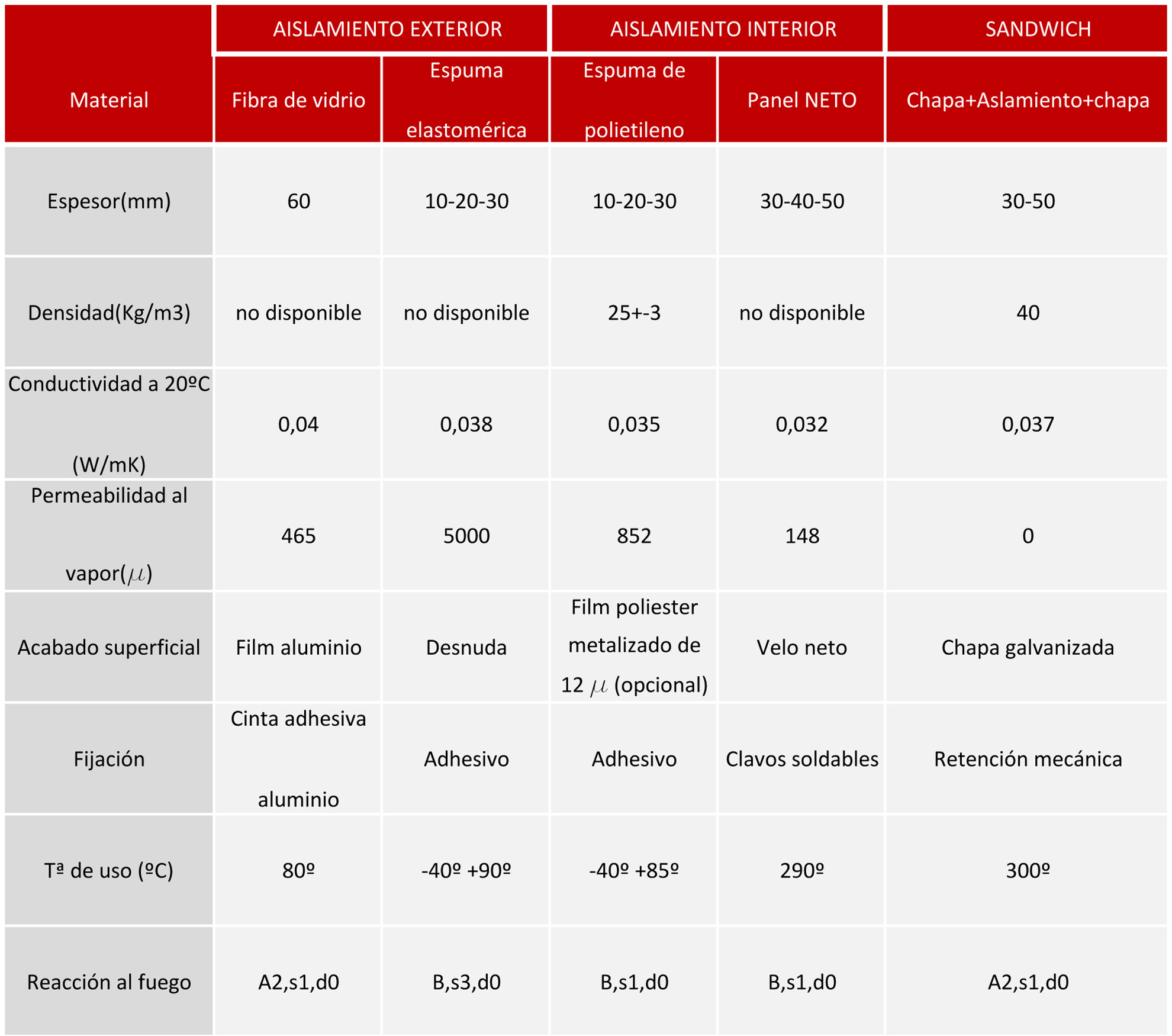Air conditioning ducts. Overview
Gains and losses heat ducts flow and return on a network air conditioning ducts can be considerable. This happens, Therefore when the duct traverses an unconditioned local and where ducts are of great length through conditioned spaces. The heat is transmitted from outside to inside when a local refrigerated and inside out when hot air is blown.
There are several factors that influence heat gain of ductwork:
- Heat gain increases with a rectangular duct with a form factor greater (relationship long side and short side large)
- The tubes that carry small amounts of air at low speed is more heat gains.
Therefore it is a good rule to project ducts with rectangular sections with a small ratio of their dimensions and high speeds to reduce heat gains in the ducts. If these run through unconditioned local or foreign, isolate is decisive.
Insulation thickness according RITE
In the residential building, RITE dictates the thickness of insulation required to converge towards energy efficient heating systems. In paragraph IT 1.24.2.2. Thermal insulation in ductwork:
- Pipes and fittings network supply air allow sufficient heat insulation so that heat loss is not greater than the 4% carrying power and always sufficient to prevent condensation.
- When the rated thermal power installed generating heat and cold is less than or equal to 70kW apply the minimum insulation thickness for pipes and fittings network of supply air in the table below. For more powers to 70 Kw be justified documented that losses are not higher than those specified above.
- For a material of thermal conductivity at 10 ° C of Reference 0,40 w /(m.K), thicknesses will be reflected in the table below.
- For materials of different thermal conductivity of the above, is considered valid determination of minimum thickness applying equations:
d= Minimum thickness of the material used in mm.
dref= Minimum thickness in mm reference material.
l= Thermal conductivity material used in W / Mk
λref= reference thermal conductivity at 10 ° C of 0,04 W / mK
D= Inside diameter of insulating material, coincident with the outside of the conduit in mm
EXP= Número neperiano( 2,718..) higher than the figure in brackets
The air conditioning duct
To improve the thermal performance of installations exist and there are new technical insulation materials that offer good performance in terms of the objectives to be achieved.
The basis for making a good air conditioning ducts He is a solid galvanized steel conduit conveniently treated with an isolation that gives optimum thermal properties. The thermal insulation may be internal or external depending on whether the duct runs outside or inside the building, if seen or passes through ceiling etc…


